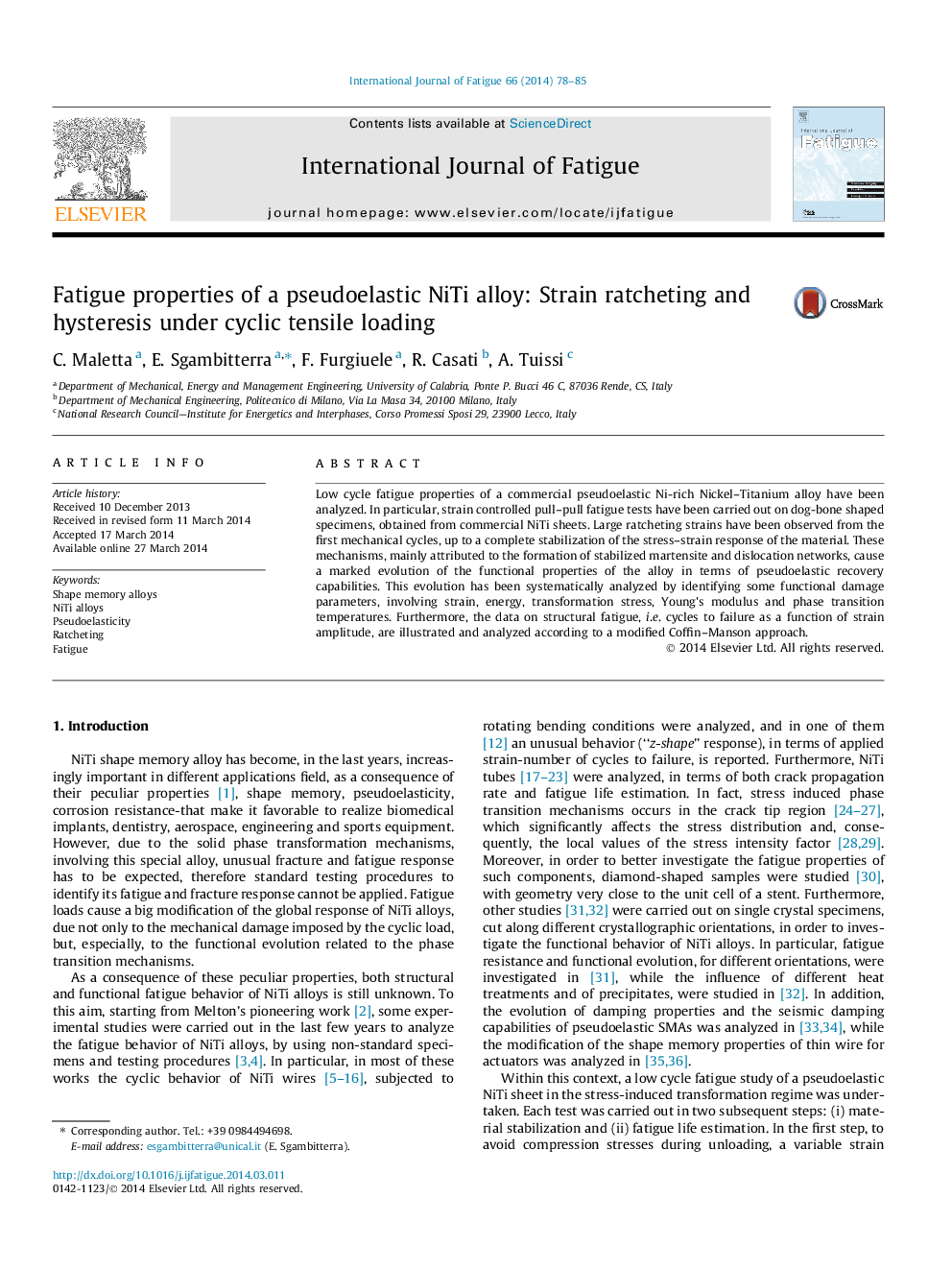| Article ID | Journal | Published Year | Pages | File Type |
|---|---|---|---|---|
| 778230 | International Journal of Fatigue | 2014 | 8 Pages |
•Strain controlled pull-pull fatigue tests have been carried out.•Large ratcheting strains have been observed from the first mechanical cycles.•A marked evolution of the functional properties of the alloy has been observed.•Fatigue data were analyzed according to a modified Coffin-Manson approach.
Low cycle fatigue properties of a commercial pseudoelastic Ni-rich Nickel–Titanium alloy have been analyzed. In particular, strain controlled pull–pull fatigue tests have been carried out on dog-bone shaped specimens, obtained from commercial NiTi sheets. Large ratcheting strains have been observed from the first mechanical cycles, up to a complete stabilization of the stress–strain response of the material. These mechanisms, mainly attributed to the formation of stabilized martensite and dislocation networks, cause a marked evolution of the functional properties of the alloy in terms of pseudoelastic recovery capabilities. This evolution has been systematically analyzed by identifying some functional damage parameters, involving strain, energy, transformation stress, Young’s modulus and phase transition temperatures. Furthermore, the data on structural fatigue, i.e. cycles to failure as a function of strain amplitude, are illustrated and analyzed according to a modified Coffin–Manson approach.
